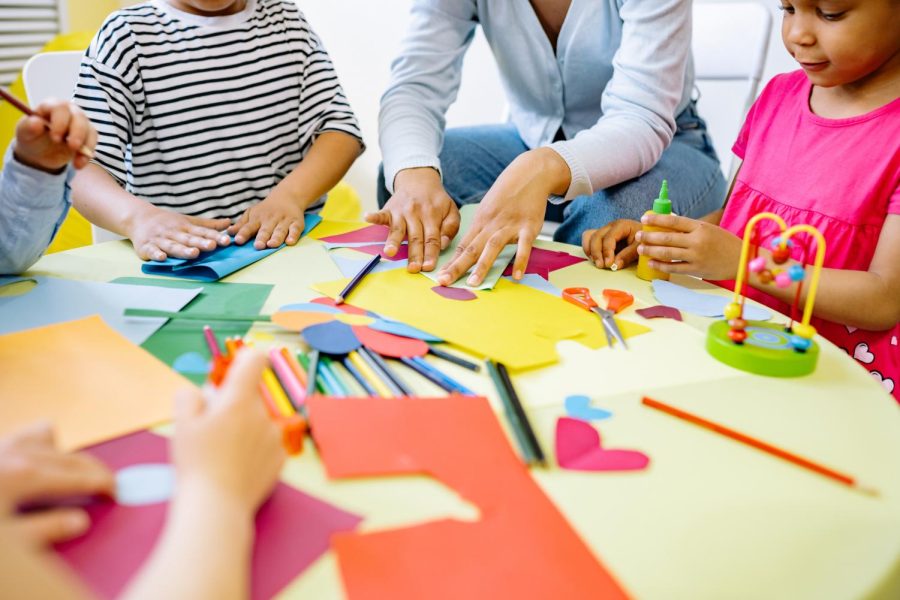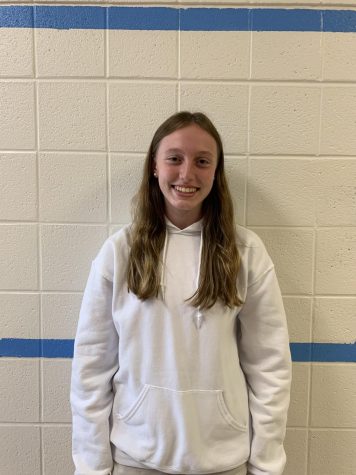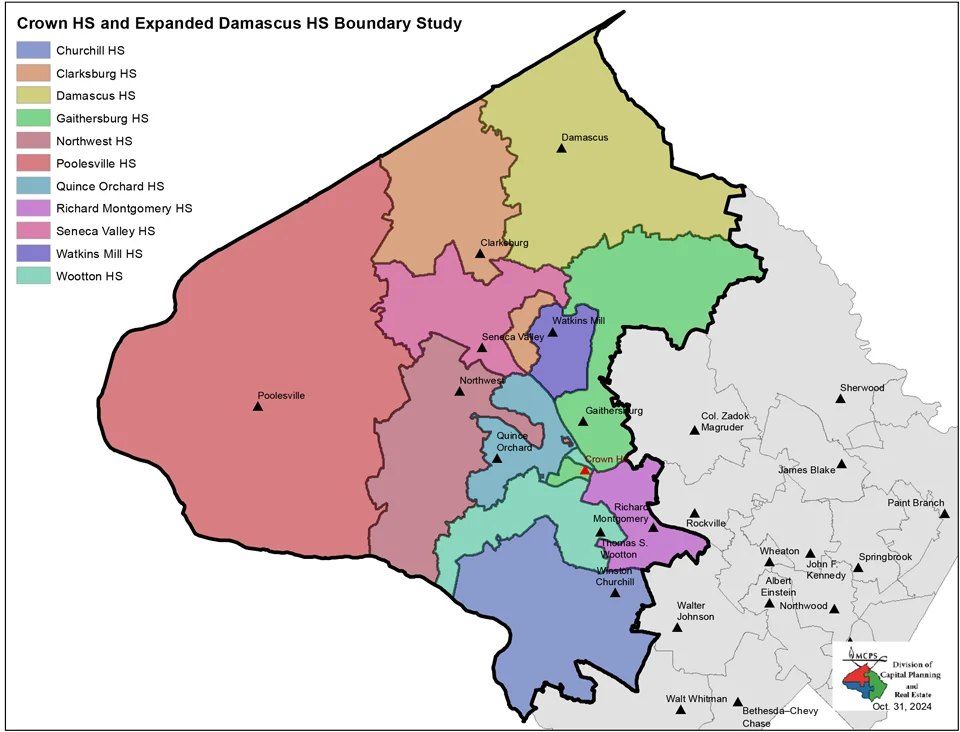“They’re just fun to be around”: Students build connections with preschoolers in Child Development classes
September 13, 2023
A typical high school class evokes images of students inattentively listening to lectures, taking notes and preparing for exams. The classroom is silent as students listen to instructions for the next project or requirements for an upcoming essay. Teachers guide students through four, seemingly infinite years of high school, hoping to get them ready for their next educational and career steps.
However, it’s not often that students find themselves leading their classes — but the Whitman Child Development Program allows for just that. Just down the hall, high schoolers are the teachers, and the students are the next generation of learners.
Ann Higby teaches this four-year program, which contains three, year-long classes and offers an internship opportunity for seniors.
In Child Development 1 and 2, students alternate between week-long units on developing and implementing lesson plans, and studying child psychology. As juniors and seniors, students enrolled in Child Development 3 follow this same format, but with a more hands-off approach from Higby.
“They learned how to do everything, and they’ve matured over the years so have a lot more independence,” Higby said.
Higby began teaching elementary school 11 years ago and taught college education courses at night. So, when she discovered the Child Development program at Whitman, she was excited to continue working with two different age groups.
“This was just the perfect mix of both my young adults and my little ones, and child development is what led me to be a teacher in high school,” Higby said. “So it was perfect.”
In each class, “teach groups” of between three and six students rotate to instruct the preschoolers every three weeks for four days.
“I’ve learned a lot about teamwork. We work with a group of kids we’ve never met before,” former student-teacher Elizabeth Dupree (’22) said. “There are a lot of underclassmen, so we all had to work on bonding together and communicating with each other.”
On Monday through Thursday, between 12 and 18 preschoolers arrive at 8:45 a.m. in the morning and stay for three periods. On Fridays, student-teachers attend seminars or go on field trips.
On instructional days, students lead children through short social studies, science, math, art, literacy and language classes and center the lessons they create around a “letter of the week.” The preschoolers learn how to write the letter, read books about the letter and think of animals and objects that start with the letter to master the material, alum Jordan Arlen (’22) said.
The day ends with everyone’s favorite — outdoor playtime and snacks, until the children’s parents pick them up at 11:45.
After completing Whitman’s child development classes, students may work as teacher interns at MCPS elementary schools, middle schools or other childcare facilities. The internships prepare students to pass the culminating Child Development Associate (CDA) which, when passed, certifies students to work in a childcare center as well.
During her internship, Arlen worked at Bradley Hills Elementary School alongside a kindergarten teacher. Arlen would teach and help with assignments for about an hour and a half each day.
“It was a really fun experience bonding with the kids and bonding with the teacher,” she said.
For students like Arlen who plan to pursue a degree in Elementary Education, the internship opportunity and Child Development Program are extremely beneficial in preparing for her future field of study, she said.
“Being interested in going into education, it’s definitely a really good start,” Arlen said. “Not every school has this opportunity for people.”
In Child Development classes, as students learn about human development and psychology, they practice valuable life skills like collaboration, time management and accountability, Higby said.
Not only does the class offer hands-on experience with the preschoolers, but students learn the importance of the lessons that they create.
“In a lot of other classes . . , sometimes [students] get excuses or they ask for deadlines, extensions and things like that. There’s no extensions here,” Higby said. “You are on with the preschoolers, they’re counting on you in real-time. That is a very different experience for them.”
Higby also emphasized the importance of her having backup plans, since the children sometimes have trouble following the first lessons that the high schoolers create, she said.
“I definitely noticed that when students start this program — especially when they’re starting to plan lessons — they’ll say things like, ‘We’ll pass around the book and each student will read,’” Higby said. “And I have to go back a lot and say, ‘Okay, they can’t read yet.’”
But as the student-teachers get more practice and experience, they start to understand the preschoolers’ abilities and learn to build flexible lessons themselves that the children can handle. After two years of Child Development, the real classroom experience taught Arlen to think on her feet and prepare for any hiccups throughout lessons, she said.
In addition to the benefits of the program, Higby aims to create a class environment that serves as a break from the intensity of other classes, allowing students to feel accomplished and proud of themselves as they put the lesson plans they create to use.
“It’s nice and you feel successful when you teach preschoolers something new,” Higby said, “I think just the impact of feeling like they’re making a difference or that they just have a place so they can come and just breathe a little bit.”
Child Development offers students the opportunity to enjoy themselves while learning, in a way that is unlike any other class offered at Whitman — and that includes new, optimistic perspectives that only kids can help you see, Dupree said.
“The preschoolers have very different perspectives of the world,” she said. “It’s interesting to see them, and they’re just fun to be around.”










